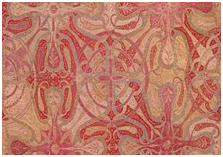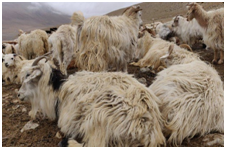POLITY AND CONSTITUTION
1. D.Y. CHANDRACHUD IS SWORN IN AS THE 50TH CHIEF JUSTICE OF INDIA
THE CONTEXT: Justice Dhananjaya Yashwant Chandrachud was sworn in as the 50th Chief Justice of India (CJI) by President Droupadi Murmu at a brief ceremony held at the Rashtrapati Bhavan.
THE EXPLANATION:
- Justice Chandrachud as CJI will have a term of two years and will head India’s judiciary until November 10, 2024, a day before he completes 65 years. His father, Y.V. Chandrachud, holds the distinction of being the longest serving CJI, who headed the judiciary from February 22, 1978 to July 11, 1985.
- CJI Chandrachud, who describes dissent as the “safety valve of democracy”, has been part of several Constitution benches and landmark verdicts of the top court, including judgments on the Ayodhya land dispute, and the Right to Privacy. He wrote lead judgment for a nine-judge Constitution Bench in the Justice K.S. Puttaswamy Vs. Union of India case, in which it was unanimously held that Right to Privacy constituted a fundamental right.
What is the Procedure?
- As per convention, the government writes to the outgoing CJI before his retirement and the CJI recommends the name of the most senior judge as the successor about a month before retirement.
- Once a new name is recommended, the incumbent CJI usually refrains from taking decisions on appointment of judges.
What is the collegium system?
- The Collegium system in India also called “Judges- selecting- Judges”, is the system by which the judges are appointed and transferred only by the judges.
- The system has evolved by means of the judgments of the Supreme Court, and not by an Act of Parliament or by a Constitutional provision.
- The Supreme Court Collegium is headed by the Chief Justice of India and comprises 4 other senior-most judges of the SC.
- A High Court collegium is headed by its Chief Justice and 4 other senior-most judges of that court. Names recommended for appointment by a High Court collegium reach the government only after approval by the CJI and the Supreme Court collegium.
- The government can return the recommendation for reconsideration by Collegium.
- If the collegium reiterates its recommendation then the government is mandated to appoint the respective person.
How does the collegium system work?
For appointing Chief Justice of India (CJI):
- The President of India appoints the CJI and the other SC judges.
- The outgoing CJI recommends his successor.
- In practice, it has been strictly by seniority ever since the supersession controversy of the 1970s.
For appointing other SC Judges:
- SC judges are recommended by a Collegium consisting of the CJI and 4 senior-most judges of SC.
- The Collegium recommends the candidate to the Law Minister, who forwards it to the Prime Minister who then advises the President for the final appointment.
For appointing Chief Justice of High Courts:
- President appoints CJ of HC in consultation with CJI (consults other SC collegium members) and governor of the respective state.
- The candidate is selected from outside the respective state.
For appointing other HC judges:
- HC judges are also appointed by the President who consults the HC Collegium (CJ of HC and 4 senior-most HC judges), CJI (consults other SC collegium members), and the Governor of the respective state.
For appointing Judges of Common HC:
- Judges of common HC are appointed by the President who consults CJI (consults other SC collegium members) and Governors of respective states.
VALUE ADDITION:
National Judicial Appointments Commission (NJAC)
- The government through the 99th constitutional amendment wanted to replace the collegium with the NJAC.
- The NJAC comprised of 3 judges of SC, a central law minister, and 2 civil society experts.
- A person would not be recommended by NJAC if any 2 of its members did not accept such a recommendation = making the appointment process more broad-based.
- However, it was struck down by the Supreme Court in 2015 in the Fourth Judges Case.
2. REVISION SERIES: WHAT IS THE GUILLOTINE?
- Parliament, unfortunately, has very limited time for scrutinising the expenditure demands of all the ministries. In the schedule drawn up by the Business Advisory Committee (BAC), there is a fixed period of discussion for each ministry.
- Often the time allotted for these ministries is taken up by other pressing political issues of the day that dominate the Budget session. So, once the prescribed period for the discussion on demands for grants is over, the speaker applies the `guillotine’, and all the outstanding demands for grants, whether discussed or not, are put to vote at once.
What happens after the guillotine is applied?
- The government formally introduces the Appropriation Bill. This is to authorise the government to draw funds from the Consolidated Fund of India. Once this Bill is passed, it becomes the Appropriation Act. It is after the voting on the Appropriation Bill that the Finance Bill is taken up for consideration.
- Discussion on the clauses of the Finance Bill and on the amendments thereto is confined to the tax proposals. After the passing of this Bill, it enters the statute as the Finance Act. Thus, the final Budget gets approved.
- If voting on these bills goes against the government, it is treated as a vote of no confidence against the government. Thus, a government can even fall if a money bill gets voted out. These fears get heightened in coalition politics.
ECONOMIC DEVELOPMENT
3. INDIA’S FIRST SOVEREIGN GREEN BONDS FRAMEWORK
THE CONTEXT: Recently, the Union Minister for Finance & Corporate Affairs approves the final Sovereign Green Bonds framework of India.
THE EXPLANATION:
- This approval will further strengthen India’s commitment towards its Nationally Determined Contribution (NDCs) targets, adopted under the Paris Agreement, and help in attracting global and domestic investments in eligible green projects. The proceeds generated from issuance of such bonds will be deployed in Public Sector projects which help in reducing carbon intensity of the economy.
What are Green Bonds?
- Green bonds are financial instruments that generate proceeds for the investments in environmentally-suitable and climate friendly projects. These instruments have lower capital cost than regular bonds.
- Indian Government announced at the Union Budget 2022-23 that it will issue its maiden sovereign green bonds in the present financial year. The government announced that it would auction Rs.16,000 worth of green bonds during the second half of FY 2023. This accounts for a fraction of the Central Government’s borrowing programme for October-March.
What is Green Finance Working Committee?
- The Indian Government had set up a Green Finance Working Committee headed by the Chief Economic Adviser to select eligible project for financing via green bonds. This does not include large hydropower plants. The committee will meet at least two times a year. It has members from relevant line ministries, the Ministry of Environment, Forests and Climate Change, NITI Aayog, and the Budget Division of the finance ministry’s Department of Economics and others.
About Green Bonds Framework
- The Green Bonds Framework was released by the Indian Government on November 9, 2022.
- As per this framework, the payments of principal and interest on the Green Bonds will not rely on the eligible projects’ performance. Therefore, the investors will not be adversely affected by any project-related risks.
- The eligible expenditure are limited to government expenditures that occurred within 12 months before the issuance of the bond. All of the proceedings for the bond will be allocated to projects within 24 months after the issuance.
- While the Union Ministry of Finance has the right to make any changes in the Green Bonds Framework, the modifications made will be reviewed by an independent organization. The framework was reviewed by the Norway-based CICERO Shades of Green – a firm that provides second opinions on green bond frameworks.
- The framework has been rated “Medium Green” with a “Good” governance score by CICERO. The medium green rating is provided to projects and solutions that make significant stride towards long-term vision but not quite there yet.
SCIENCE AND TECHNOLOGY
4. INDIA’S FIRST PRIVATE SATELLITE VEHICLE
THE CONTEXT: Recently, India’s first privately developed launch vehicle – Hyderabad-based Skyroot’s Vikram-S – is all set to make its maiden flight from the country’s only spaceport in Sriharikota between November 12 and 16.
THE EXPLANATION:
- Marking the beginning of private sector launches, the mission named ‘Prarambh’ will see Vikram-S carry three customer satellites in a sub-orbital flight.
- According to the Company officials, the final launch date will be decided based on weather conditions. “The Vikram-S rocket is a single-stage sub-orbital launch vehicle which will carry three customer payloads and help test and validate technologies in the Vikram series space launch vehicles”.
Private Players in Space Sector:
- The Economic Survey 2021-22, presented by Finance Minister Nirmala Sitharaman in Parliament, said with the recently undertaken policy initiatives and private sector participation, the Indian space sector is expected to capture a larger share of the global space economy, which was close to USD 447 billion in 2020.
- At present, India accounts for only about two per cent of the space economy, much behind the major players – the US and China.
- It said more than 100 start-ups were working in the space sector, with 47 start-ups registering with the government in 2021 itself.
(IN-SPACe)
- It was mandated the task of promoting, authorising and licensing private players to carry out space activities.
- As an oversight and regulatory body, it is responsible for devising mechanisms to offer sharing of technology, expertise, and facilities free of cost to promote non-government private entities (NGPEs).
- IN-SPACe’s Monitoring and Promotion Directorate oversees NGPE’s activities as per prescribed regulations and reports back in case any corrective actions or resolutions are required.
- ISRO shares its expertise in matters pertaining to quality and reliability protocols, documentations and testing procedure through IN-SPACe’s ‘interface mechanism’.
ENVIRONMENT, ECOLOGY AND CLIMATE CHANGE
5. WHAT IS AQI?
THE CONTEXT: The problem of air pollution in Delhi-NCR and surrounding areas has made its annual November-December(2022) appearance in policy debates and public discussion, the Air Quality Index (AQI) has been mentioned repeatedly.
THE EXPLANATION:
- Air Quality Index (AQI) is a number, which is a measure of air quality. The higher the AQI, the worse the air. After staying above 450 for a couple of days, the AQI in Delhi on Sunday had come down to around 320.
- The colour-coded AQI index was launched in India in 2014, and it helps the public and the government understand the condition of the air and what subsequent measures are to be taken to combat the situation, based on its severity. There are six categories of AQI, namely ‘Good’ (0-50), ‘Satisfactory’ (50-100), ‘Moderately polluted’ (100-200), ‘Poor’ (200-300), ‘Very Poor’ (300-400), and ‘Severe’ (400-500).

PRELIMS PERSPECTIVE
6. PASHMINA SHAWLS
THE CONTEXT: Traders of universally-prized Pashmina shawls are complaining that “obsolete testing methods” have resulted in many of their export consignments being flagged for presence of ‘Shahtoosh’ guard hair, which is obtained from endangered Tibetan antelopes.
THE EXPLANATION:
- The traders claim the use of obsolete techniques such as ‘Light Microscopy’ by the authorities has resulted in several cases of ‘false positive’ leading to their wrongful prosecution.
About Shahtoosh Shawls
- Shahtoosh also known as Shahtoosh, is a wool obtained from the fur of the chiru (Pantholops hodgsonii, also called Tibetan antelope). Also, shawls made from the wool of the chiru are called shahtoosh. Shahtoosh is the finest animal wool, followed by vicuña wool.
- As undomesticated wild animals, the chirus cannot be shorn, so they are killed for this purpose. Due to the severe decline of the chiru population by 90 % in the second half of the 20th century, they were internationally classified as a critically endangered species until 2016. Since 2016, they have been classified as a near threatened species due to species conservation programs and partial recovery of population size.
- The wool is mostly used to make luxurious scarves and shawls, although the production, sale, and acquisition of shahtoosh has been illegal under CITES since 1979. On the black market, shahtoosh shawls fetch prices ranging from $5,000[3] to $20,000.
About Pashmina Shawls
- Pashmina Shawls are a fine variant of shawls spun from cashmere wools.
- A cashmere wool itself is obtained from the Changthangi goat (Capra aegagrus hircus) native to the high plateau of Ladakh.
- Known for its soft features, the Pashmina Shawls himself had been a status symbol not just for the wealthy in Indian but even across the world.
- Pashmina shawls gained much prominence in the days of the Mughal Empire as objects of rank and nobility.
- Through the enthusiastic use by Empress Joséphine – the wife of Napoleon Bonaparte – the pashmina shawl gained status as a fashion icon.
- Traditional producers of pashmina wool are people known as the Changpa.
Changthangi or Pashmina goat:
- It is a special breed of goat indigenous to the high altitude regions of Ladakh in Jammu and Kashmir.
- They are raised for ultra-fine cashmere wool, known as Pashmina once woven.
- These goats are generally domesticated and reared by nomadic communities called the Changpa in the Changthang region of Greater Ladakh.
- The Changthangi goats have revitalized the economy of Changthang, Leh and Ladakh region.
Transhumance
- It is a type of pastoralism or nomadism, a seasonal movement of livestock between fixed summer and winter pastures.
- In montane regions (vertical transhumance), it implies movement between higher pastures in summer and lower valleys in winter.
- Herders have a permanent home, typically in valleys.
- Generally only the herds travel, with a certain number of people necessary to tend them, while the main population stays at the base.
- In contrast, horizontal transhumance is more susceptible to being disrupted by climatic, economic, or political change
Spread the Word

